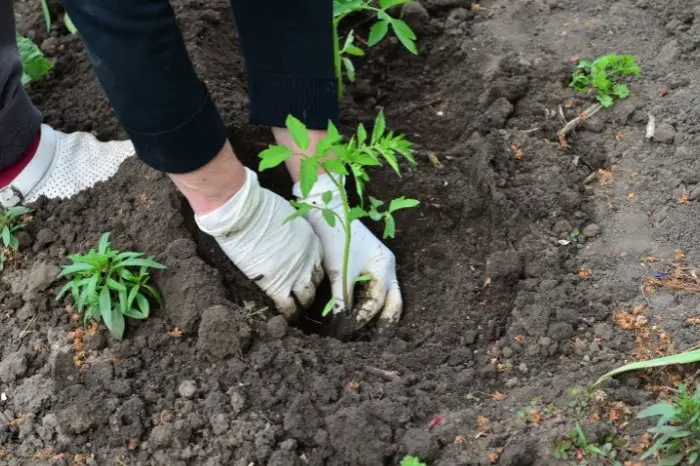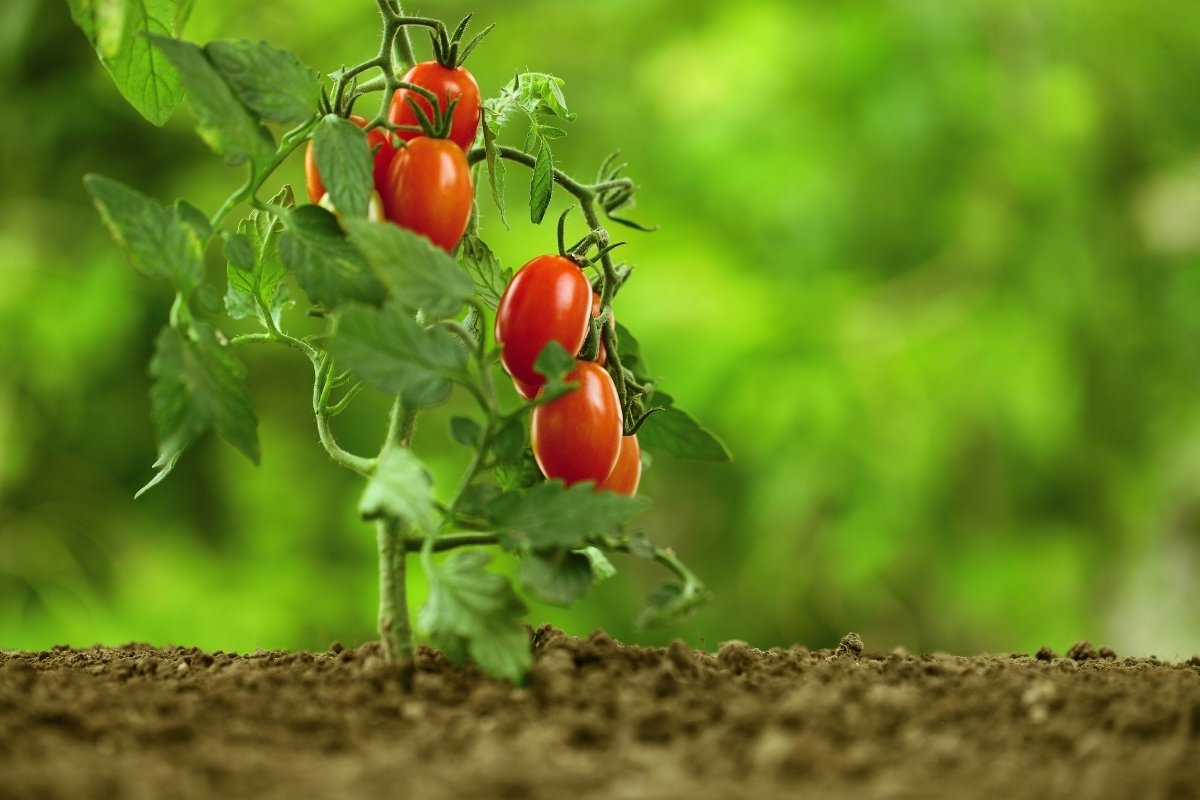Last Updated on January 16, 2022 by Cristina
If you’re growing your own vegetable garden in PA, you might be wondering when is it best to plant tomatoes in Pennsylvania. It’s also crucial to know which variants to plant, where, and how to take care of them. That’s why, in today’s article, we’ll be learning when to plant tomatoes outside in Pennsylvania, how to take care of them, and what are the best variants.
When To Plant Tomatoes In Pennsylvania?
The most important thing to understand about tomatoes is that they’re sensitive to temperatures. This fruit (technically, tomatoes are fruit) won’t make it through the winter and you have to replant it every year. The best time to plant tomatoes in Pa is in late April or early May. By that time, it should be warm enough for the plants to make it!
This is factual for planting your tomatoes outside. There is, however, an option to plant it in a container and only take it outside later. If you’d like to, you could plant your tomatoes in a container, feel free to do this as early as early April or late March. Leave it outside during the day, but make sure to keep it inside during the night, so the cold doesn’t kill them.

Many gardeners prefer this hybrid method of planting. This way, their tomatoes get a flying start and they develop fruit much earlier. Typically, tomatoes bloom in August and the bloom lasts through the fall. Pennsylvania’s growing season is no different.
Best Tomatoes To Grow In Pennsylvania
Now that we know when to plant the tomatoes, it’s important to know which variant you’ll choose and how to plant them. The most popular tomato varieties in Pennsylvania are the Red Slicers, Saladette tomatoes, and Heirloom tomatoes.
The Red Slicers are popular as tomatoes for sandwiches and salads. Variants called “Early Girl” and “Better Boy” can produce up to 10 ounces of products through a single season. Saladette tomatoes are great for sauces and salsas, while Heirloom tomatoes are actually traditional in Pennsylvania. The Amish were the ones to introduce these tomatoes to the general population of PA, way back in the 19th century.
How To Plant Tomatoes?
The tomato plant can take up to 100 days to become ready for harvest, but most tomatoes grow after about 60 days. Many gardeners have found a creative way to avoid this problem. They do that by buying tomato plants from a nursery. That means that the plants they buy have already grown to a certain degree; all they have to do is replant them into the ground.
If the temperature of the soil is at least 55 degrees Fahrenheit, you should feel free to plant your tomatoes. It’s best for the temperature to stick around 70 degrees. Either way, your tomatoes certainly are going to reach maturity in your garden, so you’ll be able to harvest them.
So, to plant your tomato, make sure that you planted a cage or a stake in the ground next to the plant. If you don’t, it’s going to develop fruit on the ground. This makes it prone to pests and disease. The cage is going to ensure that the tomato wraps up in the cage. Additionally, the plant will stay up – the cage will act as a sort of a spine for the tomato.
Dig a small hole in the ground, add some tomato fertilizer (preferably organic), and put the plant inside the hole. Make sure not to use fertilizers that are rich in nitrogen – they’re good for lawns, not for vegetable and fruit gardens. Additionally, it’s important that there’s at least 2 to 3 feet of space in between the tomatoes. This way, they’ll have enough sun and air.
After covering your tomatoes with soil, make sure you water them thoroughly. If you decide to grow your tomatoes in containers, know that not all varieties will grow well in containers. Cherry tomatoes, for example, can grow in containers very well, but larger varieties can only grow in containers as young plants.
How To Care For Tomatoes?
When it comes to tomato care, watering and fertilization are two of the most important things to keep in mind.
If you’re experiencing a particularly warm season, it’d be best to water your plants early in the day. That way, they’ll have enough water to make it through the entire day. The same goes after you’ve just planted your tomatoes – water them often.
Tomatoes need a lot of water – this will help the plant develop a strong root system. However, it’s also important that you don’t water over the head of the tomato. Try to water your plants at the base and don’t splash water on the leaves. Tomatoes need plenty of water if it is particularly sunny.
Raindrip R560DP Automatic Watering Kit for Container and Hanging Baskets
Regarding fertilization, it’s best to add some organic tomato fertilizer to the soil right after planting. Continue to fertilize your tomatoes once every two weeks with organic fertilizers.
Tomatoes aren’t prone to many diseases, but it’s not odd to find insects on them. If you notice any insects, apply a horticultural oil diluted in water. This mixture will essentially choke the insects. Most experts don’t recommend using insecticide as your first measure, because there are some useful insects that you’ll be killing as well.
Tomatoes can have Aphids, the Cutworm, Flea Beetles, the Hornworm, Whiteflies, and Leafminers as some of the most common pests. If you can’t take care of them with horticultural oil, ask around your local gardening shop what would be best to use.
Conclusion On When To Plant Tomatoes In Pa
To sum up, it’s best to plant your tomatoes in late April and early May if you live in Pennsylvania. If you have the possibility, it might be wise to plant them in a container earlier and only replant them into the soil later on. It’s also possible to buy already grown tomatoes and replant them in the soil.
There are different varieties of tomatoes you can plant in PA. All of them require constant watering and fertilizing. They are, however, easy to plant and take care of, and they’ll most likely going to be ready for the harvest that same season.



